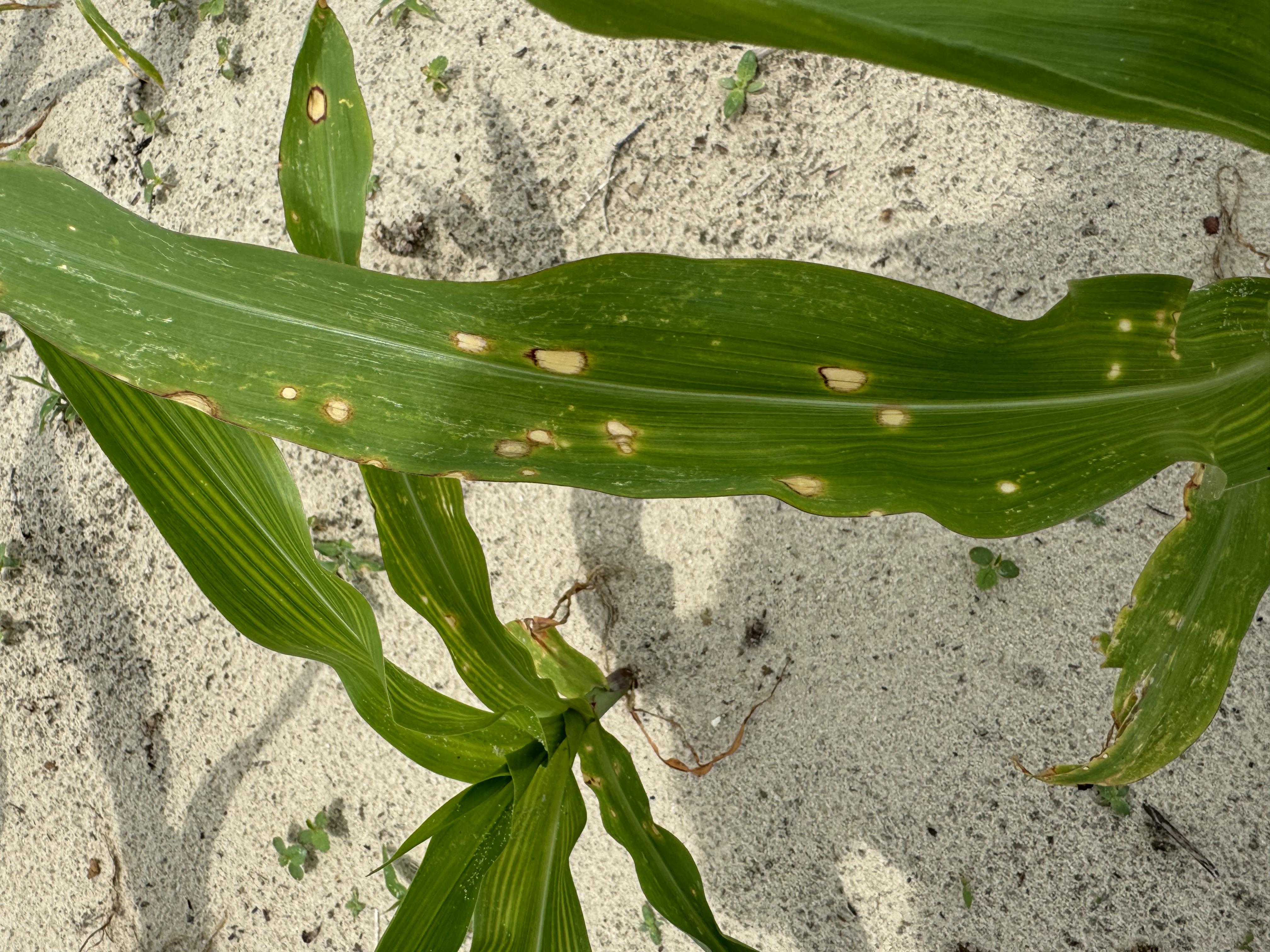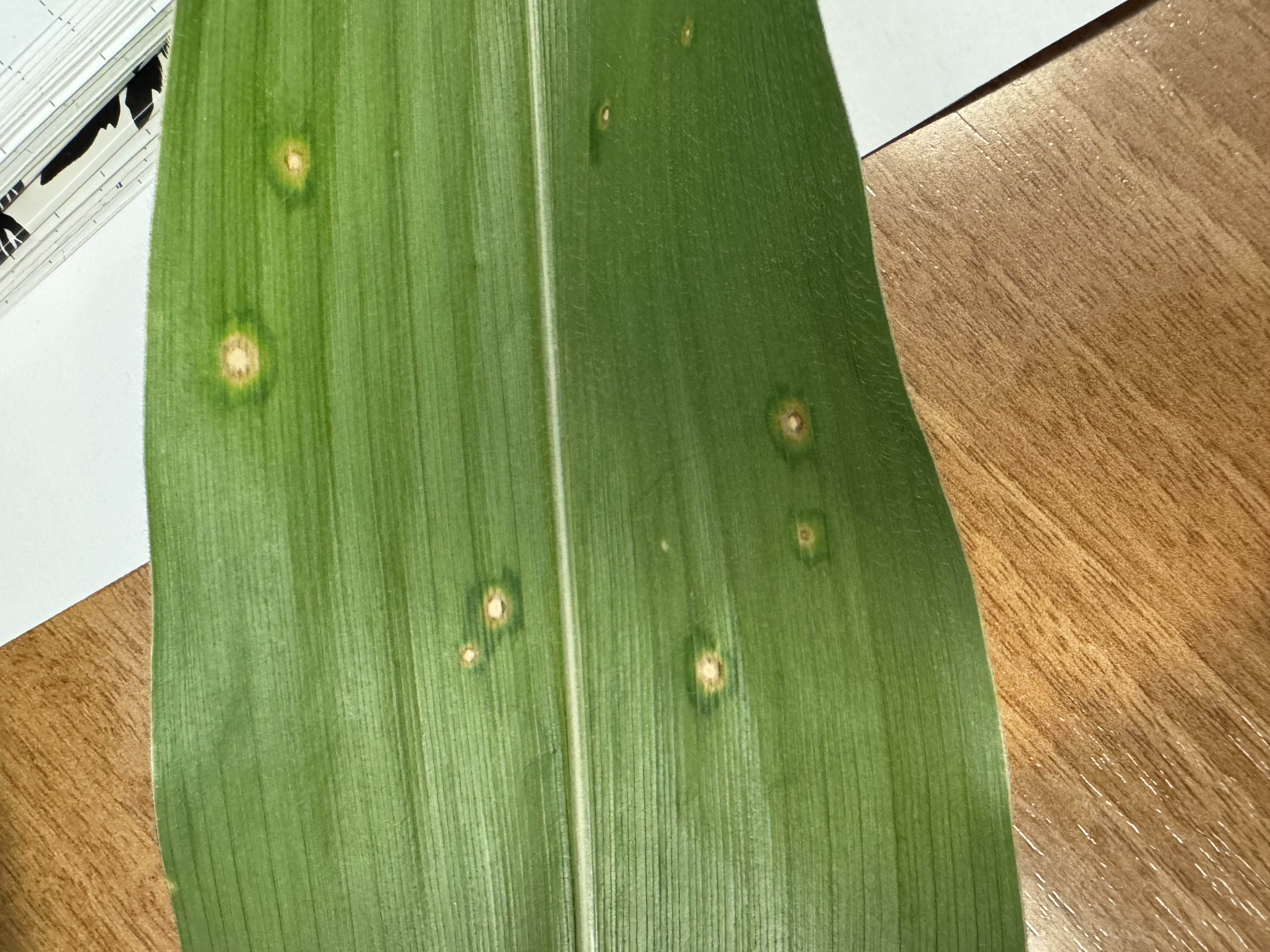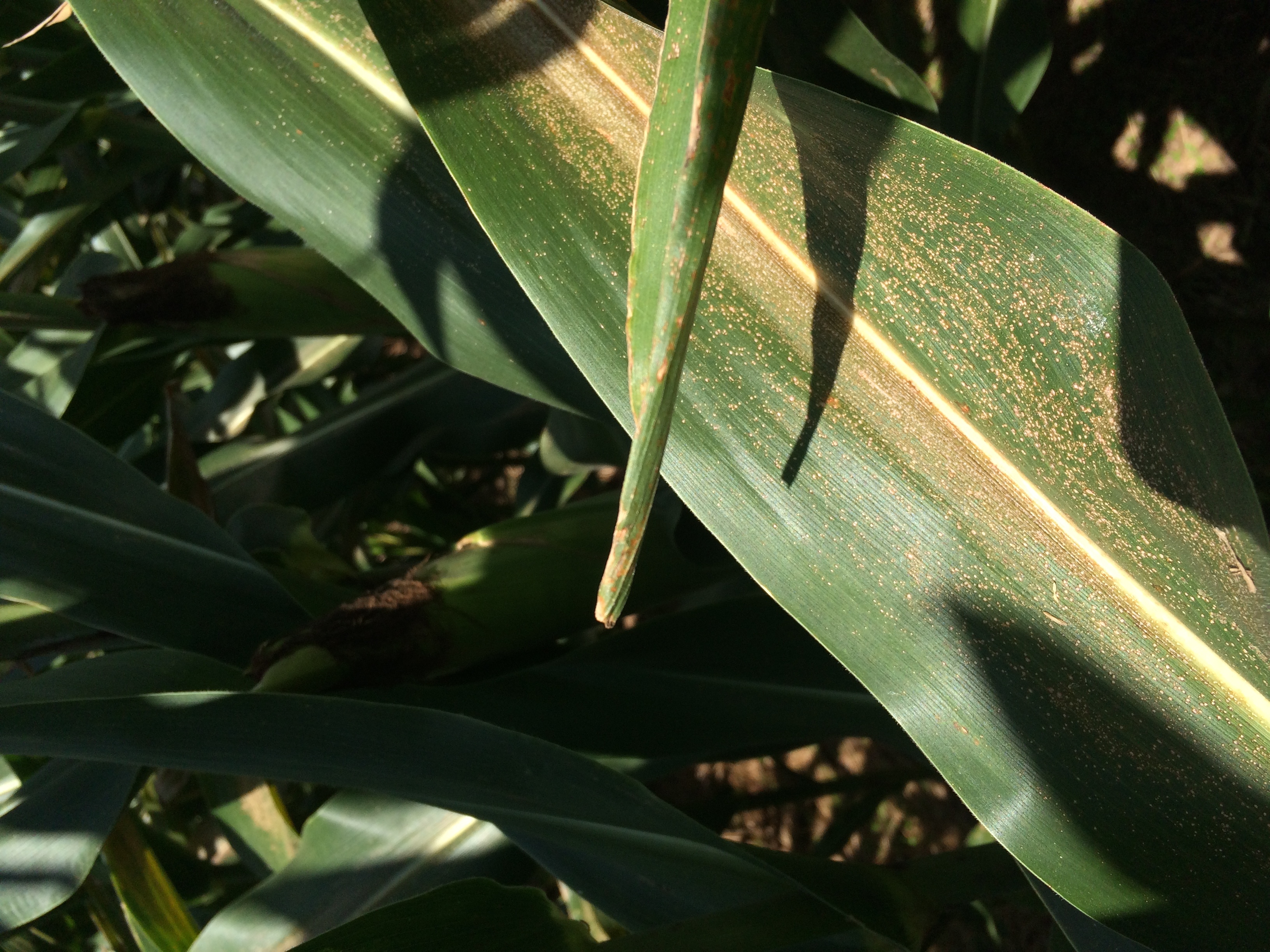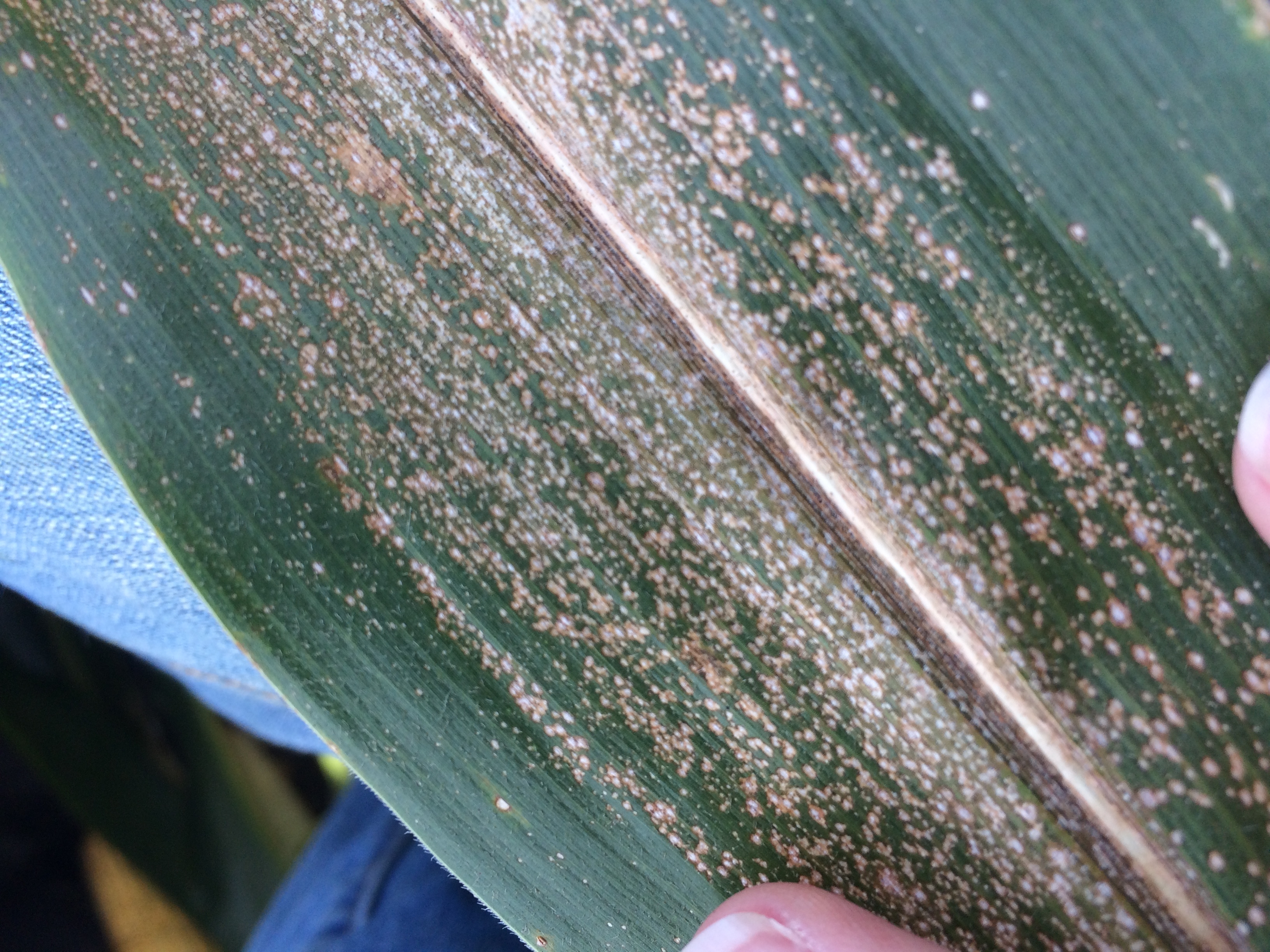Seeing Spots on Corn? It’s Likely Holcus Leaf Spot
go.ncsu.edu/readext?1076046
en Español / em Português
El inglés es el idioma de control de esta página. En la medida en que haya algún conflicto entre la traducción al inglés y la traducción, el inglés prevalece.
Al hacer clic en el enlace de traducción se activa un servicio de traducción gratuito para convertir la página al español. Al igual que con cualquier traducción por Internet, la conversión no es sensible al contexto y puede que no traduzca el texto en su significado original. NC State Extension no garantiza la exactitud del texto traducido. Por favor, tenga en cuenta que algunas aplicaciones y/o servicios pueden no funcionar como se espera cuando se traducen.
Português
Inglês é o idioma de controle desta página. Na medida que haja algum conflito entre o texto original em Inglês e a tradução, o Inglês prevalece.
Ao clicar no link de tradução, um serviço gratuito de tradução será ativado para converter a página para o Português. Como em qualquer tradução pela internet, a conversão não é sensivel ao contexto e pode não ocorrer a tradução para o significado orginal. O serviço de Extensão da Carolina do Norte (NC State Extension) não garante a exatidão do texto traduzido. Por favor, observe que algumas funções ou serviços podem não funcionar como esperado após a tradução.
English
English is the controlling language of this page. To the extent there is any conflict between the English text and the translation, English controls.
Clicking on the translation link activates a free translation service to convert the page to Spanish. As with any Internet translation, the conversion is not context-sensitive and may not translate the text to its original meaning. NC State Extension does not guarantee the accuracy of the translated text. Please note that some applications and/or services may not function as expected when translated.
Collapse ▲With such a wet May, y’all are probably seeing an uptick in leaf spots on corn, but there’s no need for concern. It’s likely holcus leaf spot, a minor bacterial disease that typically shows up early in the season under warm, wet conditions.
What Is Holcus Leaf Spot?
Holcus leaf spot (or holcus spot) is caused by the bacterium Pseudomonas syringae pv. syringae. The disease begins as circular, oval, or irregular dark green, water-soaked spots. As they dry, these lesions turn light tan to white, often with a thin, papery texture, and may develop light brown to reddish margins surrounded by yellow halos (Figures 1 & 2). Spots range from 1/8 to 1/4 inch in diameter and tend to appear randomly across the leaf surface, especially on the upper half of the leaves and near the tips of lower leaves. Disease severity can vary widely from leaf to leaf.

Source: Mac Malloy, Robeson County

Source: Melissa Huffman, Onslow County
What Can It Be Confused With?
Holcus leaf spot is often mistaken for:
- Contact herbicide injury, especially from products like paraquat (Figure 3). Herbicide injury typically appears uniformly on leaves at the same growth stage, and new leaves are unaffected. Look for a gradient of symptoms across the field; if symptoms fade from the edge inward or nearby non-corn plants are also affected, herbicide drift is more likely.
- Eyespot, a fungal disease, which also causes round lesions with a brown border and yellow halo (Figures 4 & 5). However, eyespot lesions are much smaller, more numerous, and more evenly distributed than those caused by holcus leaf spot. They also do not have the water-soaked margins that are more indicative of bacterial leaf spots.
If spots are larger than a pencil eraser tip, the symptoms don’t follow a clear gradient, surrounding vegetation appears healthy, and lesion patterns vary leaf to leaf, holcus leaf spot is the likely culprit.


Source: NCSU Plant Disease and Insect Clinic

Source: NCSU Plant Disease and Insect Clinic
Why Am I Seeing It Now?
This disease tends to appear early in the season, especially in warm (76–86°F), wet conditions following high winds and thunderstorms. The pathogen thrives in wet conditions and spreads via rain splash and storm-driven wind. It can survive in plant debris and infect new tissue through wounds or natural leaf openings. Holcus leaf spot has a broad host range, affecting many grasses and dicots.
What’s the Impact?
Holcus leaf spot is considered a minor disease in corn. Yield losses are rare, and even when lesions are noticeable, the primary concern is just a slight reduction in photosynthetic area.
How Do You Manage It?
Management is often not required. There are no effective in-season treatments. Fungicides won’t work against this bacterial disease. Most corn hybrids have adequate resistance, and management focuses on cultural practices, including:
- Residue management to reduce bacterial inoculum.
- Crop rotation and weed control.
- Tillage, when appropriate, to break the disease cycle.


